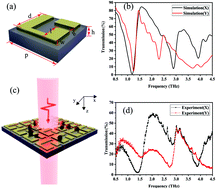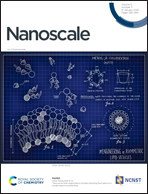A multiple mode integrated biosensor based on higher order Fano metamaterials†
Abstract
A multiple mode integrated biosensor based on higher order Fano metamaterials (FRMMs) is proposed. The frequency shifts (Δf) of x-polarized quadrupolar (Qx), octupolar (Ox), hexadecapolar (Hx), y-polarized quadrupolar (Qy) and octupolar (Oy) Fano resonance modes are integrated to detect the concentration of lung cancer cells. In experiments, the concentrations of lung cancer cells can be distinguished by the shape and distribution of integrated graphics. In addition, an anomalous response in Δf in resonant mode is surprisingly observed. As the cell concentration increases, the Δf at the Qx-dip, Qy-dip and Oy-dip successively experiences an increasing frequency shift stage (IFSS), decreasing frequency shift stage (DFSS) and re-increasing frequency shift stage (RIFSS). The extraordinary DFSS confirmed by single-factor analysis of variance (ANOVA) means an unusual physical phenomenon in metamaterial biosensors. By introducing a new dielectric constant εf, we amend perturbation theory to explain the unusual phenomenon in Δf. With the change of the mode order from Qx to Hx, the εf increases from −2.78 to 0.75, which implies that the negative εf leads to the appearance of the DFSS. As a platform for biosensing, this study opens a new window from the perspective of multiple mode integration.



 Please wait while we load your content...
Please wait while we load your content...